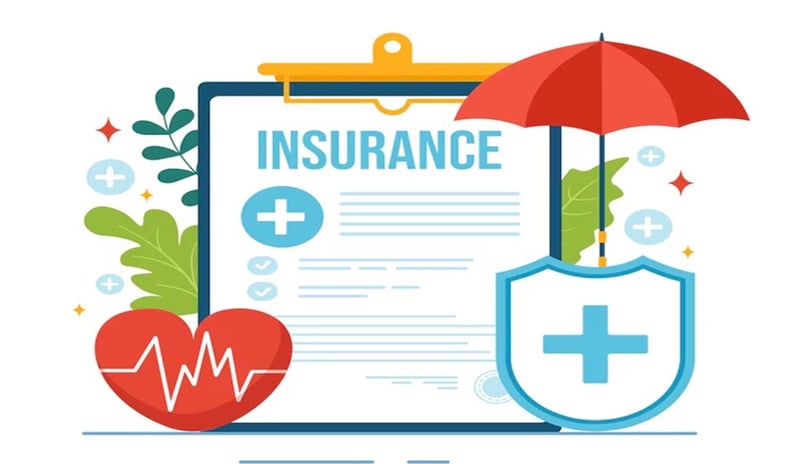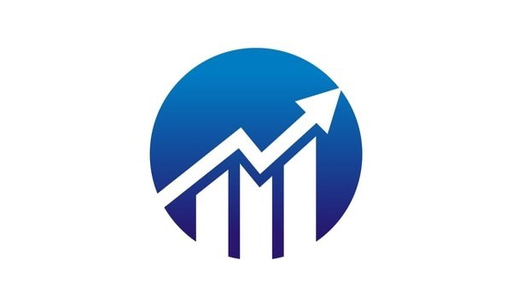What Is Insurance ?
This post provides an in-depth explanation of insurance, exploring its purpose, types, and mechanics. Learn how insurance protects against risks, the key components of policies, and the claims process, while examining the future of this essential financial tool.
INSURANCE
12/25/20246 min read


In This Post:
Insurance is a system of risk management that transfers the financial burden of unexpected losses to an insurer in exchange for regular premiums.
Purpose: It provides financial protection, enables risk-taking, and promotes economic stability for individuals, families, and businesses.
Types of Insurance: Includes health, auto, homeowners, life, disability, travel, and business insurance, each catering to specific risks.
Policy Components: Key elements include premiums, deductibles, coverage limits, and exclusions, which define the terms of the agreement.
Claims Process: Involves reporting the event, submitting documentation, assessment by the insurer, and settlement if approved.
Future Trends: Digital platforms, artificial intelligence, and new risks like cyber threats are reshaping the insurance industry.
Key Takeaways
Insurance offers financial protection against risks, operating on a model of shared responsibility.
Understanding the types of insurance helps individuals and businesses choose coverage that aligns with their needs.
Policy components like premiums, deductibles, and exclusions are essential to grasp for effective risk management.
The claims process ensures policyholders receive compensation for covered events, supporting recovery from financial losses.
The insurance industry is adapting to emerging risks and technological advancements, providing innovative solutions for modern challenges.
What is Insurance? A Comprehensive Guide
Insurance is a cornerstone of modern life, designed to protect individuals, families, businesses, and organizations from financial losses due to unforeseen events. At its core, insurance is a system of risk management that operates on the principle of shared responsibility. It involves pooling resources from many people to help those who face specific losses recover financially. By transferring the financial risk of potential catastrophes to insurance companies, policyholders gain peace of mind and stability in the face of uncertainty.
The concept of insurance dates back thousands of years, with early examples found in ancient Babylonian and Chinese civilizations. Merchants and traders would share the risks associated with transporting goods across dangerous waters or trade routes. Over centuries, insurance evolved into a sophisticated system covering a wide range of risks, from property damage to life and health. Today, insurance is an integral part of personal finance, business operations, and global economic stability.
How Insurance Works
Insurance works through a contract between the policyholder and the insurer. In this contract, the policyholder agrees to pay premiums—regular payments—to the insurer. In exchange, the insurer promises to provide financial compensation if specific events occur. These events, known as covered risks, are outlined in the policy. For example, a homeowner’s insurance policy might cover fire damage, theft, or natural disasters, while a health insurance policy covers medical expenses like hospital stays or surgeries.
To make the system viable, insurers rely on the law of large numbers. By pooling premiums from many policyholders, insurers can predict the likelihood of certain events and allocate resources accordingly. Not everyone will experience a covered event, but those who do can access the funds needed to recover.
Consider the example of auto insurance. Millions of drivers pay monthly premiums to their insurers. While most will not experience a car accident in a given year, those who do can file claims to cover repair costs, medical bills, or liability expenses. This shared approach to risk ensures that individuals don’t bear the full financial burden of unforeseen events.
The Purpose and Importance of Insurance
The primary purpose of insurance is to provide financial protection. Without it, individuals and businesses could face crippling losses from accidents, illnesses, or disasters. Imagine the financial strain of a house fire or a medical emergency without insurance coverage. The costs could easily exceed an individual’s savings, forcing them to take on debt or liquidate assets.
Insurance also plays a critical role in economic stability. It enables businesses to take calculated risks, knowing they are protected from significant financial consequences. For instance, a manufacturer can invest in new equipment or expand operations with confidence, knowing they have coverage for potential damages or liabilities.
Another key purpose of insurance is to promote social stability. In the aftermath of natural disasters or widespread crises, insurance funds are often vital for recovery efforts. By compensating policyholders, insurers help communities rebuild and prevent long-term economic decline.
For individuals, insurance provides peace of mind. Knowing that health expenses, car accidents, or home repairs are covered allows people to focus on their personal and professional goals without constant fear of financial instability.
Types of Insurance
Insurance is a broad field with many categories, each designed to address specific risks. Some of the most common types include:
Health Insurance
Health insurance is essential for managing medical expenses, from routine checkups to major surgeries. It covers hospital stays, medications, diagnostic tests, and preventive care. Policies vary widely, with some requiring co-pays or deductibles before coverage kicks in. In many countries, health insurance is provided through employers, government programs, or private insurers.
Auto Insurance
Auto insurance protects drivers from the financial consequences of accidents, theft, or damage to their vehicles. It often includes liability coverage, which pays for damages to others if the policyholder is at fault, and comprehensive coverage, which addresses non-collision incidents like theft or natural disasters.
Homeowners Insurance
Homeowners insurance covers damages to a person’s home and belongings caused by events like fires, storms, or vandalism. It also includes liability protection if someone is injured on the property. Mortgage lenders typically require homeowners insurance as a condition for financing.
Life Insurance
Life insurance provides financial support to beneficiaries after the policyholder’s death. It’s a critical tool for ensuring that loved ones are cared for, especially when the policyholder is a primary breadwinner. Policies can be term-based (lasting a set number of years) or permanent, which includes whole and universal life insurance.
Disability Insurance
Disability insurance replaces a portion of the policyholder’s income if they are unable to work due to illness or injury. It’s particularly valuable for self-employed individuals or those without employer-sponsored disability coverage.
Travel Insurance
Travel insurance covers risks associated with trips, such as trip cancellations, medical emergencies, or lost luggage. It’s especially useful for international travel, where medical costs or disruptions can be expensive.
Business Insurance
Businesses rely on insurance to protect against property damage, liability claims, employee-related risks, and more. Specialized policies, such as professional liability insurance for lawyers or cyber insurance for technology firms, address industry-specific risks.
Key Components of an Insurance Policy
Insurance policies are detailed contracts that outline the terms and conditions of coverage. Key components include:
Premiums: The payments policyholders make to maintain coverage. Premium amounts depend on factors like risk level, coverage limits, and the policyholder’s profile.
Deductibles: The amount the policyholder must pay out of pocket before the insurer covers the remaining costs. Higher deductibles often lead to lower premiums.
Coverage Limits: The maximum amount the insurer will pay for a claim. Policies may have limits per incident or for the overall term.
Exclusions: Specific risks or events that are not covered. For example, a standard homeowners policy might exclude flood damage, requiring separate flood insurance.
Understanding these components helps policyholders choose the right coverage and avoid surprises during the claims process.
The Claims Process
Filing a claim is the process of requesting compensation from an insurer after experiencing a covered event. The process typically involves several steps:
Notify the Insurer: Contact the insurance company immediately after the event.
Provide Documentation: Submit evidence, such as photos, police reports, or medical records, to support the claim.
Assessment: The insurer evaluates the claim to determine if it meets policy conditions.
Settlement: If approved, the insurer pays the agreed amount, either directly to the policyholder or to third parties, such as repair companies or medical providers.
For example, after a car accident, the policyholder files a claim with their auto insurer, providing photos of the damage and a police report. The insurer assesses the claim and issues payment for repairs.
Challenges and Controversies in Insurance
Despite its many benefits, insurance is not without challenges and controversies. One common issue is affordability. Many people struggle to afford adequate coverage, particularly for health or life insurance. In some cases, those who need coverage the most—such as individuals with preexisting conditions—face higher premiums or limited options.
Fraud is another challenge, with some individuals submitting false claims to receive payouts. Fraudulent activities increase costs for insurers, which often pass these costs on to policyholders through higher premiums.
There are also debates about exclusions and policy loopholes. For instance, after natural disasters, some homeowners discover that their policies don’t cover certain types of damage, leading to financial hardships.
The Future of Insurance
The insurance industry is evolving rapidly, driven by advancements in technology and changing consumer expectations. Digital platforms are making it easier to compare policies, purchase coverage, and file claims. Artificial intelligence and data analytics are improving risk assessment, enabling insurers to offer personalized policies and streamline processes.
Emerging risks, such as cybersecurity threats and climate change, are reshaping the types of coverage needed. For example, businesses are increasingly purchasing cyber insurance to protect against data breaches, while homeowners in flood-prone areas are seeking specialized policies.
Conclusion
Insurance is an essential tool for managing risk and ensuring financial stability. By transferring the financial burden of unforeseen events to insurers, individuals and businesses can navigate challenges with confidence. From health and auto insurance to specialized policies for unique risks, the options available cater to a wide range of needs. Understanding how insurance works, its components, and its benefits empowers people to make informed decisions and protect what matters most.
